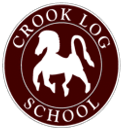Maths
Intent, Implementation and Impact
Intent |
|
Maths is a powerful tool with great relevance to the real world. For this to be appreciated by pupils, they need direct experience of using Maths in a wide range of contexts throughout the curriculum. Using and Applying Maths provides the framework within which all Maths work should be undertaken. Pupils should acquire Maths experiences through a) individual, group and class work b) practical, investigative, oral, written (real and imagined) problem solving activities c) activities which involve both independent and co-operative work.
We intend on delivering a curriculum which:
|
Implementation |
Planning should: Developing conceptual fluency: A great deal of emphasis is placed on developing children’s conceptual understanding. The majority of ideas in maths are entirely abstract. In order for children to attach meaning to these abstract ideas, we need to expose them to their structure. This is done through the use of physical and visual resources, which help children to visualise maths. Developing procedural fluency: Equal attention is given to improving children’s procedural fluency; the ability to recall number facts quickly and efficiently. Children are expected to learn some facts off by heart, whilst they are taught mental strategies to quickly derive others. Variation: To ensure that children gain a good understanding of each concept, teachers will use a variety of representations and examples (as per the calculation policy). Targets Each class will have a whole class Maths target displayed in their classroom. Next steps or now try this will be shown in teachers marking for individual targets. Assessment: |
Impact |
|
Books show:
In addition:
Marking: Green for correct, pink for ‘think’. No need to write a comment after each piece of work. Stamp or leave with no comment. At least once a week have a ‘Now try this’ or ‘next steps’ and get the children to correct any work you see necessary. Date the statement covered on the targets sheet inside front cover and mark absences on the inside back cover. AS= adult support, PS= problem solving, R=reasoning, M= mastery Lessons show: • Challenge, a range of suitable resources, clear objectives and a passion for learning. Concrete, pictorial and abstract resources aids teaching across all year groups. • Mathematical concepts or skills being mastered when a child can show it in multiple ways, using the mathematical language to explain their ideas, and can independently apply the concept to new problems in unfamiliar situations. • Teachers intervene swiftly to help pupils showing misconceptions, while deepening the learning of others. • CPD for staff shows impact in delivering the maths curriculum effectively using a wide range of teaching resources. |





